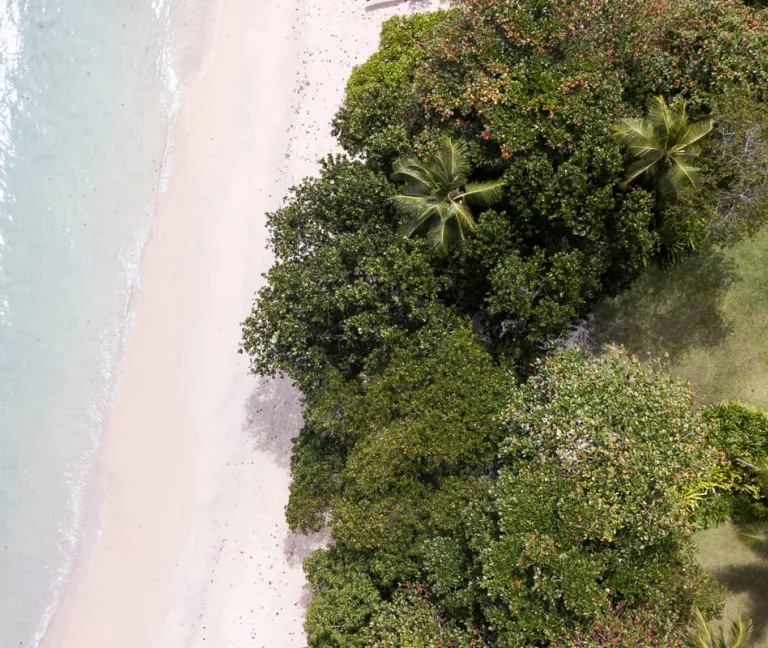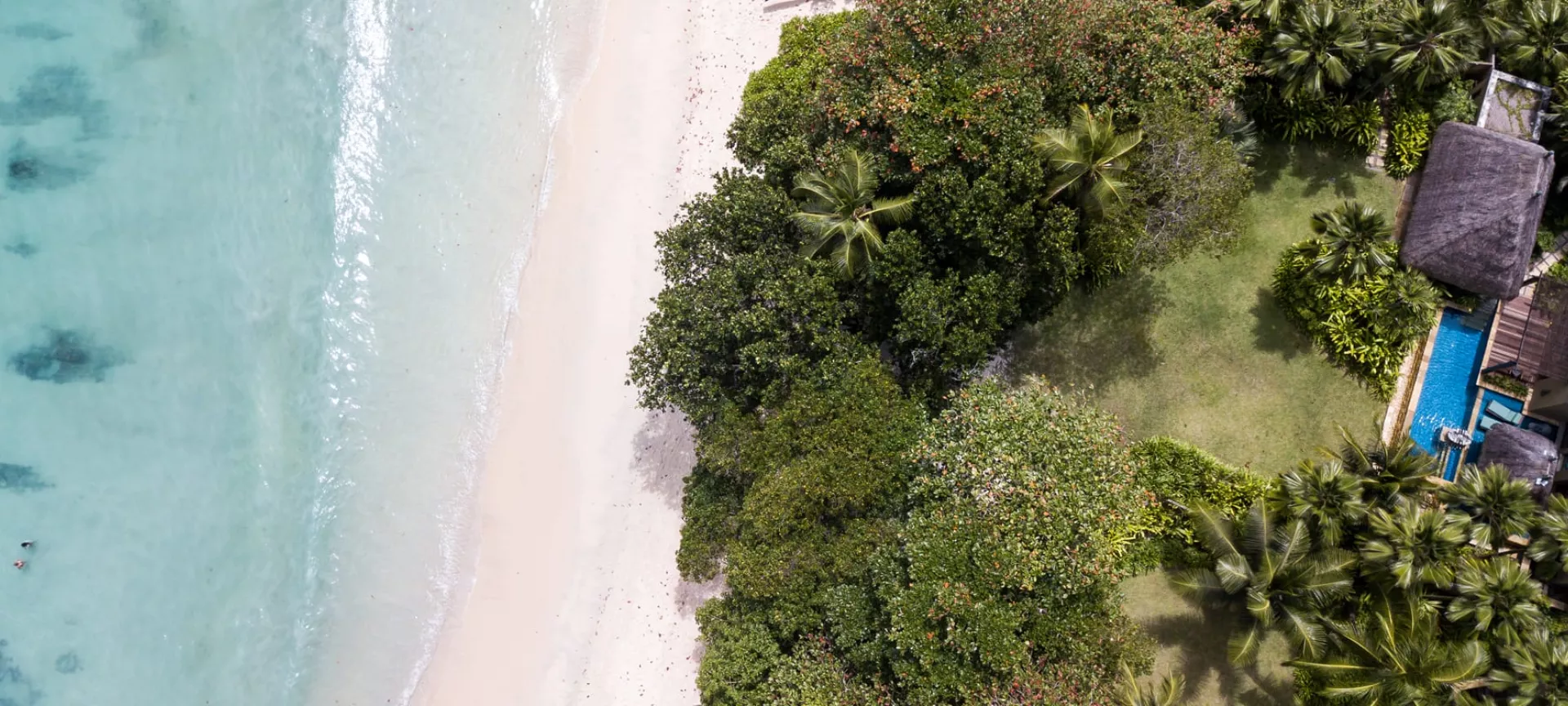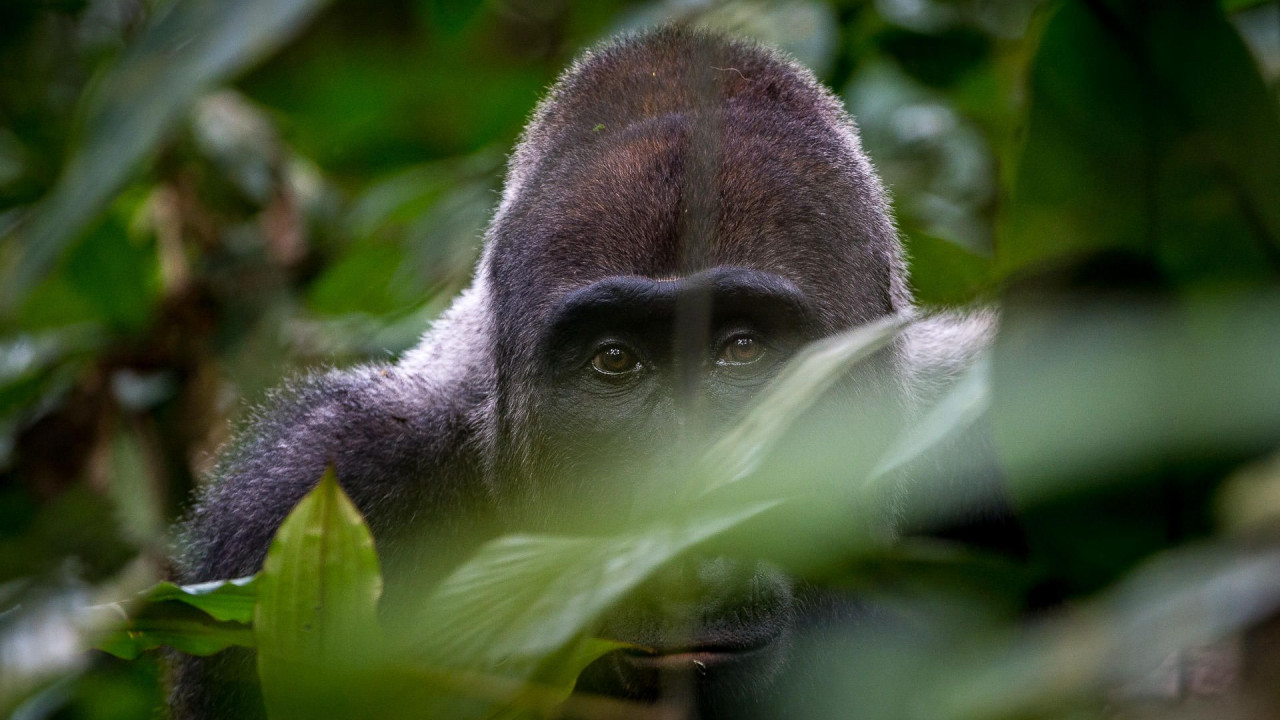
Tracking great apes through the dense African forests is a truly magical and memorable experience.
Sitting with our closest cousins and observing them as they groom, play, socialise and interact with each other is a privilege that only few can describe. The two words that we so frequently hear from our clients following their treks are 'emotional' and 'humbling'.
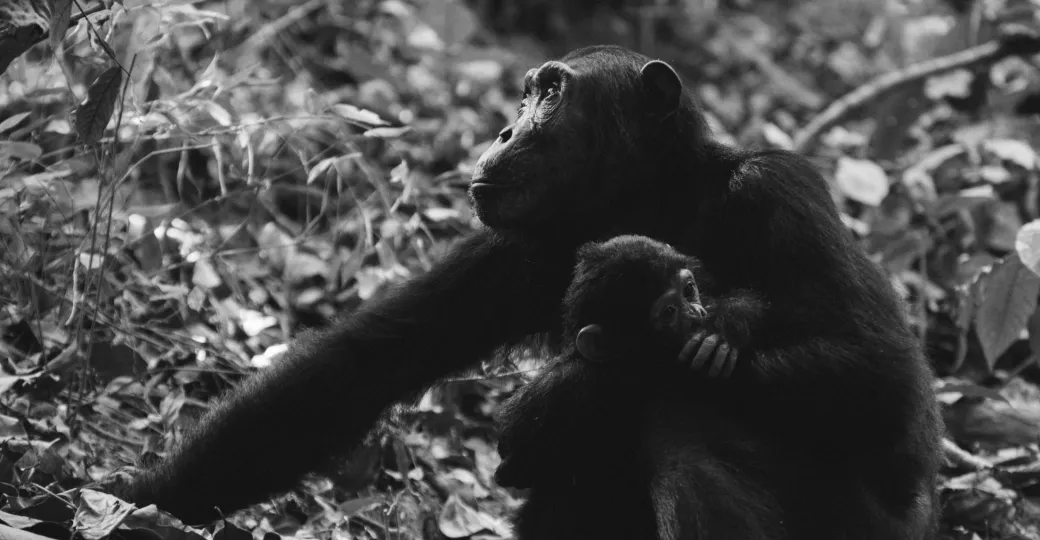
Chimpanzee mother with child in Tanzania's Mahale Mountain National Park
First things first. Great apes - what are they exactly?
In a nutshell, great apes (or 'Hominidae') are tailless primates.
There are 8 species of great ape that roam our planet: Three orangutans, the chimpanzee and the bonobo (both of the Pan genus), the eastern and western gorilla, and finally us, humans.
Along with monkeys, gibbons, lemurs etc, all great apes are classified as primates, however, the characteristic that defines us as 'great' is, quite simply, the fact that we don't have a tail. Evolving to walk upright (or on knuckles) and not needing a tail to balance and grip trees, we have developed independently from other primates which, over millennia, has resulted in us being a more intelligent and social animal.
The great apes across Africa are almost entirely found within the continent's central band of forests and jungles - the animals' preferred habitat. The map below shows their distribution:
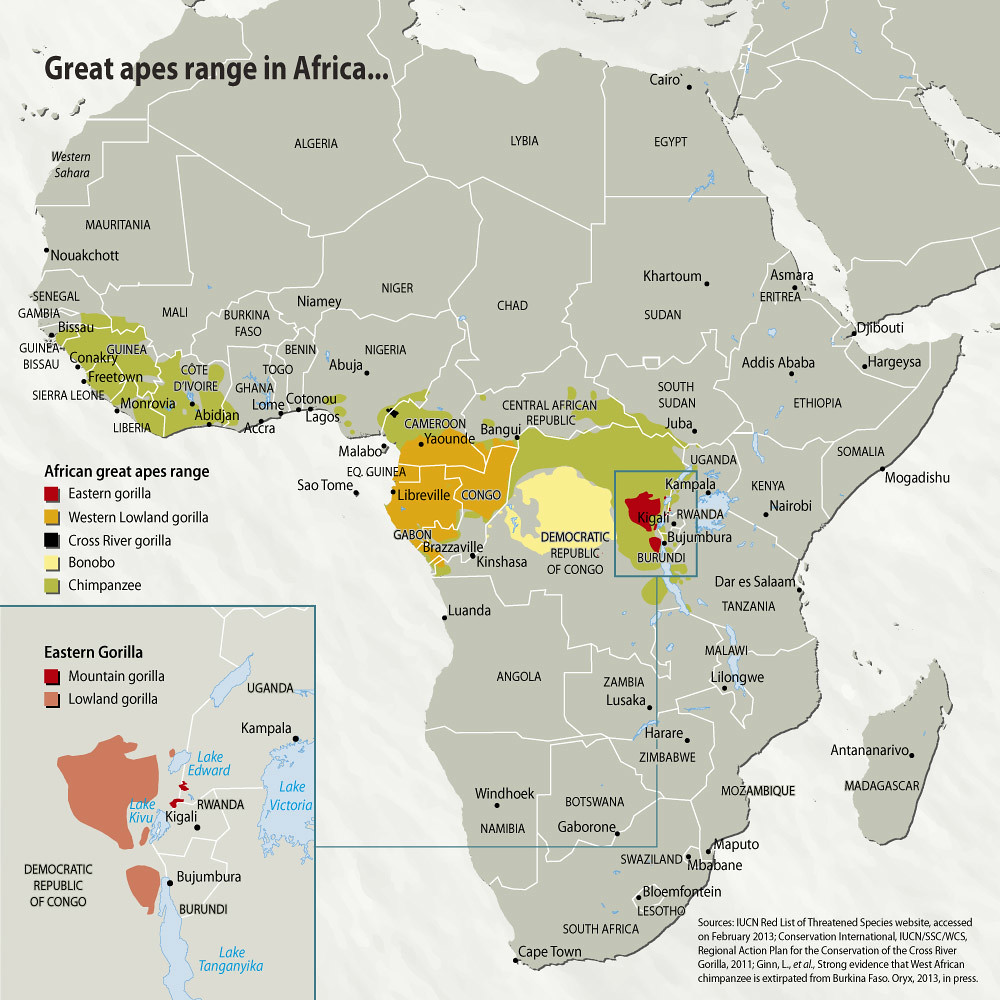
The Mountain gorilla (a subspecies of Eastern gorilla) found in East Africa's Uganda, Rwanda and DRC are without a doubt the most popular great apes to trek with on the continent. Trekking with chimpanzee is often overlooked as being a substandard alternative to gorilla trekking, but it really shouldn't be; these fascinating, highly social and active animals are our closest cousin (we share 98.6% of our DNA with them), and being able to spend time with them and observe them is nothing short of marvellous.
The much more numerous Western gorilla have a slightly lighter fur than their eastern cousins, and are found amongst the countries closest to the Gulf of Guinea. Both species of gorilla are classified as 'critically endangered', and their true numbers in the wild are not entirely known.
Along with the common chimpanzee, the bonobo is the closest relative to humans and can be found in DRC. The three species descended from single ancestor that lived six or seven million years ago. As the bonobo and chimpanzee aren't proficient swimmers, it's thought that the formation of the Congo River roughly 2 million years may have led to the speciation of the bonobo. Bonobos live south of the river, and were separated from the ancestors of the common chimpanzee, which live north of the river.
In this blog post, we'll explain where you can spend time with these animals, when is the best time to go, and what a typical trekking experience entails.
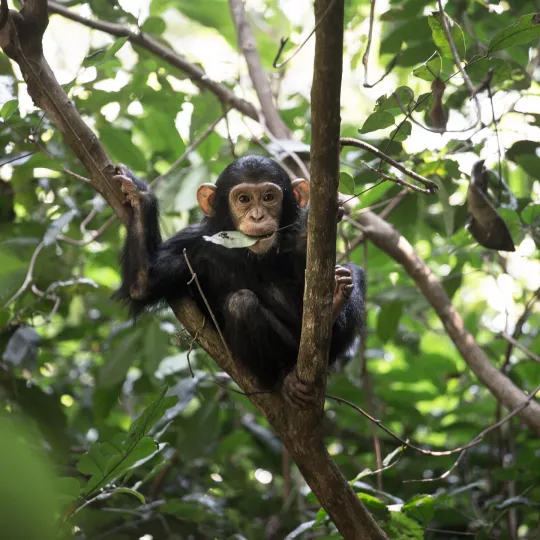
Trekking with Great Apes
Gorilla (Eastern & Western)
Where - Gorilla can be found in the thick, dense jungles of Eastern Africa, all the way through to Gabon's west coast.
The 850 or so Mountain gorilla (a subspecies of the Eastern gorilla of which there are thought to be around 6,000 remaining) that live in the wild are interspersed between the high altitude jungles of Rwanda, Uganda and the DRC. We often get asked which of the three countries we would recommend as a top destination for gorilla trekking, however it is difficult to choose between both Uganda and Rwanda as our number one. Both have their pros and cons, and are more suited to travellers looking for different overall experiences. We'd love to chat to you about which would be more suited to you - please do get in touch, and we can discuss.
With an estimated 200,000 individuals remaining in the wild, Western gorilla are much more populous and live from the jungles of the Congo to the coast of Gabon. While tourism networks are few and far between in this part of the world, there is a phenomenal initiative in the Sangha Tri-National Reserve (CAR) and Odzala-Kokoua National Park (Congo) that offers superb opportunities to spend time with these animals, and discover the other amazing wildlife in the area like elephants and black-bellied pangolin.
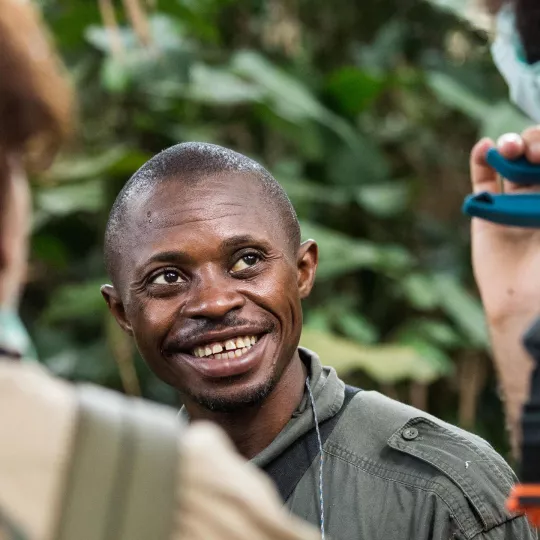
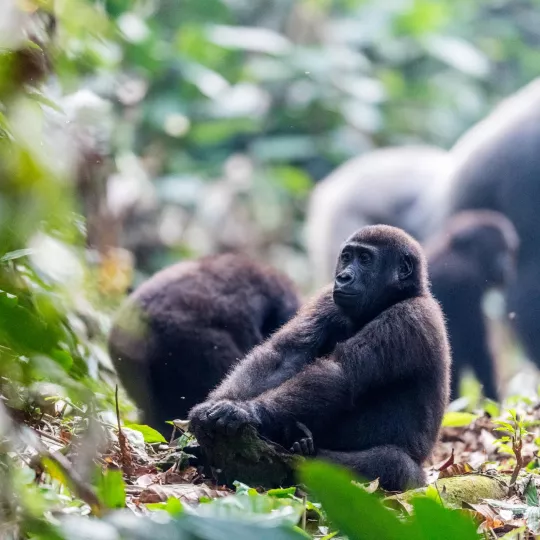
Tracking Lowland gorilla with highly experienced guides from Ngaga Camp - The Congo
When - Being pretty much bang on the equator, Uganda, Rwanda and the DRC have a tropical climate and it's really very hard to predict the weather with any degree of accuracy. Whenever and wherever you visit, you can expect to receive a fair amount of sunshine, and should expect some rain too! The countries typically follow the same 'two dry season' climate as Eastern African countries, with the weather being marginally less wet between December & February and June & October.
Gorillas give birth throughout the year, so if you are hoping to see a baby, you don't really have to plan your visit around a particular season. It is obviously not something that can be guaranteed though - we would recommend speaking to the trekking HQ about this on the morning of your hike.
The Experience - Only eight visitors are allowed per each habituated gorilla family per day and, to minimise possible transmission of human diseases, visitors are asked to maintain a distance from the animals. Tracking through dense forest with steep slopes means that participants do need to be physically fit to enjoy the track - the hike can last from 3 - 8 hours in total.
The gorillas are completely wild but have become used to having a few humans present after years of habituation. Many of the expert guides have been involved in this process for decades and are able to explain the complicated etiquette involved in meeting a giant silverback.
Typically, in the very early morning, trackers will head out to where the gorillas were last seen the day before and try to locate them. Once their whereabouts are known, the trackers radio back to the national park office to update HQ. This is where you will have met at around 6 or 7 in the morning to meet the other people in your trekking group.
Guests are normally paired up into ability, with the most active people selected together. The most active groups will go to the most distant gorillas and vice versa. You tend to get some super sporty Swedish types who want to head out for a 6 hour hike, and others who don’t really want to head out that far! If numbers allow, you can sometimes pick and choose your group.
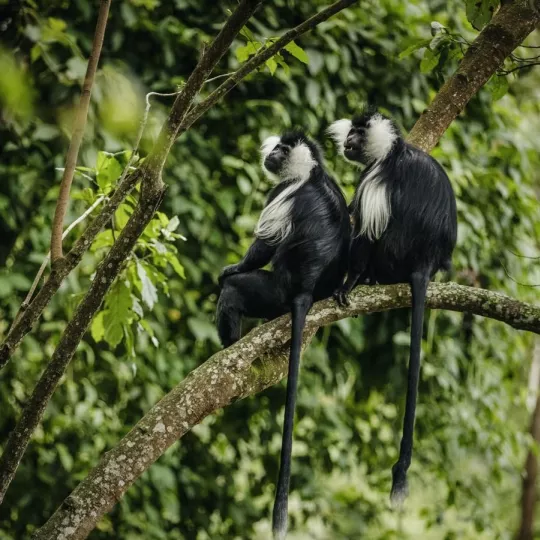
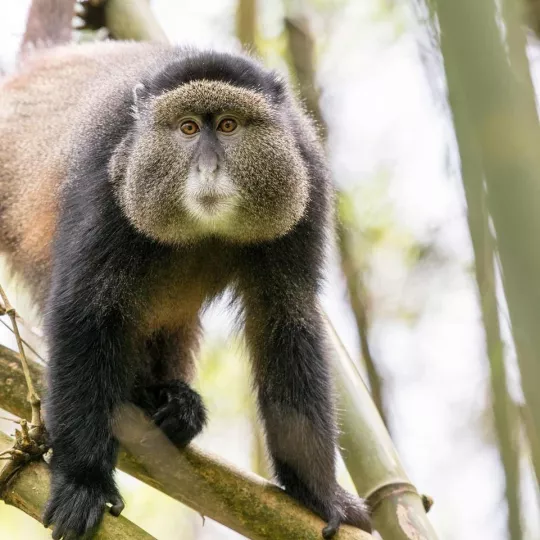
Some of the other types of primate that you may encounter during your trek
You will then head out in search of the gorillas, and will be trekking through dense undergrowth and sometimes across streams etc - come prepared! The ranger guide will explain you more about the animals and plants species that you encounter on your way. Once the gorillas are located, you are able to spend a maximum of one hour, watching them eat, play, socialise and groom, before returning back to camp.
It's so easy to sit there for the full hour taking photos, trying to capture that one shot that encapsulates the experience. What we recommend is to take photos, but put down your camera after after 5 minutes or so and just sit back and absorb the scene unfolding in front of you! There are literally millions of gorilla photos on the internet - yes, they're not your photos so you should take a few - but this may be your only chance to spend time with these incredible animals.
Please note only children aged 15 and above can track gorilla. The price of a gorilla tracking permit varies by country, with Rwanda costing in excess of $1,500 per person, Uganda in the region of $700, and DRC $400.
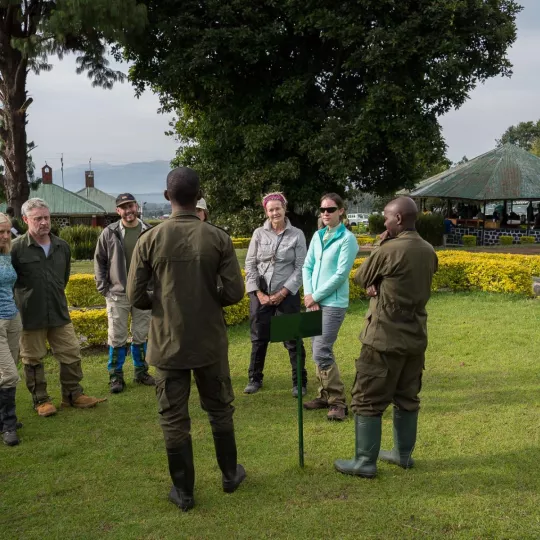
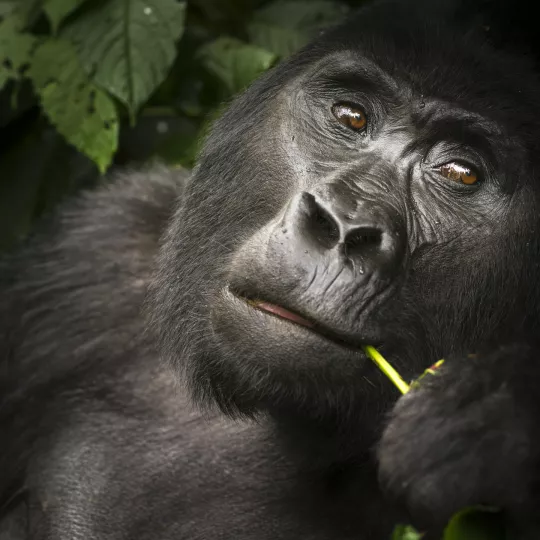
Gorilla tracking in Uganda and Rwanda
Chimpanzee and Bonobo
Where - While bonobo are only exclusively found in the DRC, chimpanzee are widespread and exist from Senegal to Tanzania. The locations where we would recommend trekking with chimpanzees are all within Eastern Africa, particularly in Uganda, Rwanda and Tanzania.
When - Having tropical climates and being found within lush rainforest, there is no absolute guarantee when the best time is to trek with chimpanzee - it is always best to expect varied weather! As with above however, we would recommend travelling during one of the two Eastern African dry seasons between December & February and June & October. This will not only hopefully give you a better chance of good weather, but it may also result in a better holiday either side of your chimpanzee trekking experience, if you are planning on visiting different areas of the region.
The Experience - Very similarly with the gorilla tracking above, you will head out early in the morning in small groups to locate the chimpanzee from the ranger HQ.
After trekking for an hour or two, possibly longer, only aware of the sounds the chimpanzee are making ahead of you, you will find them. You'll suddenly be surrounded and they will be everywhere - swinging through in the trees overhead and rustling through the bushes around you. At this point, you'll most likely sit quietly on the forest floor, at their level.
Sitting there, you become aware of the subtleties of different relationships, through gesture, sound and expression in the troop. One dictating the pace, another courting favour, yet another perhaps plotting a coup. There is humour too as the young chimps fall about the floor and play remarkably human games. It's pure magic!
Again, the price of a permit to track chimpanzee varies by country, although it is vastly less expensive than tracking gorilla. Permits are in the region of $35 to $180, depending on the country and place you decide to trek.
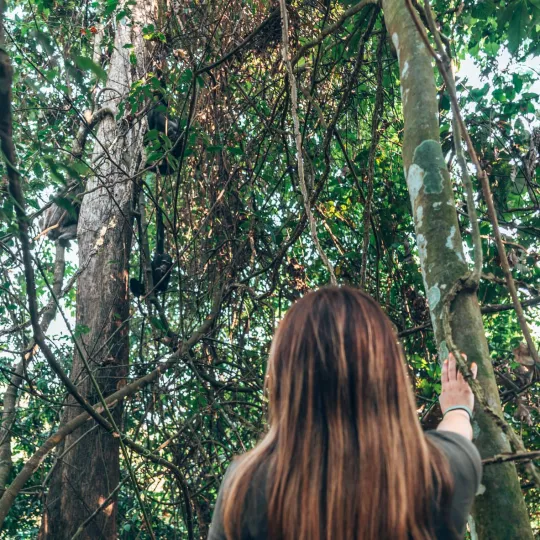
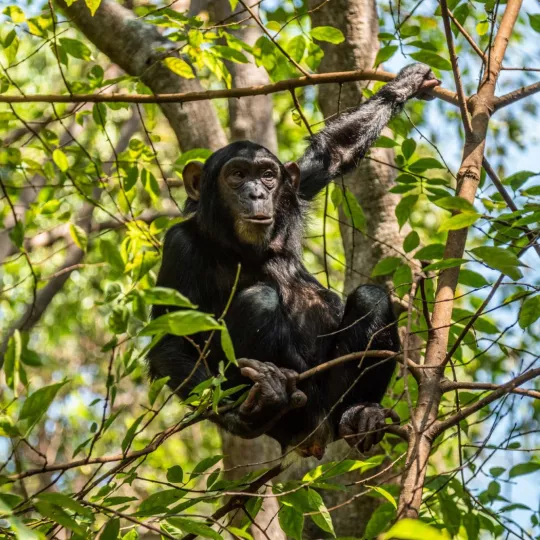
Chimpanzee tracking in Tanzania's Mahale Mountains
Our relationship to other primates is a dynamic one – and as the great Jane Goodall has often said, “Chimpanzees, more than any other living creature, have helped us to understand that there is no sharp line between humans and the rest of the animal kingdom. It’s a very blurry line, and it’s getting more blurry all the time.”
Get in touch to find out more about tracking these magnificent animals, and to start designing your journey with us today.
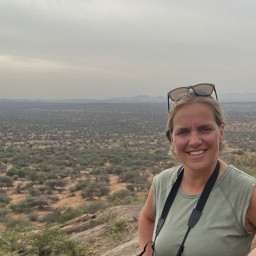
Vanessa Beldam
Ness first landed in Africa in 2008, when on a whim she accepted a job working in a safari camp in Zambia’s South Luangwa National Park. Little did she know how deep an effect this would have on he...
View profileNever miss a notebook entry with our newsletter

